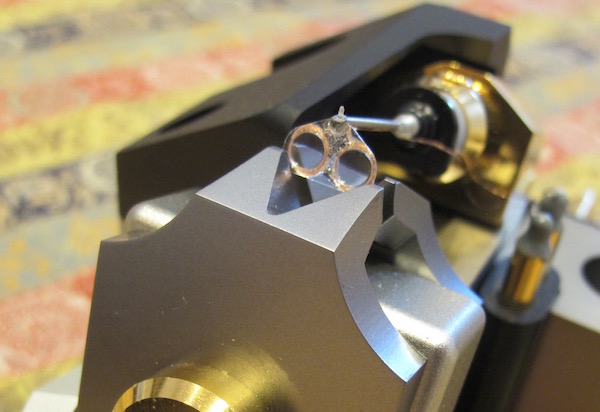Amplitude sensing cartridges have been around, but I've not seen an optical design like this. Kind of reminds me (in electrical principle) of the Sao Win FET cartride (not his strain gauge cart), substituting the FET generator for an optical component. I have no reason to think this wouldn't be something that works well. Not sure how long a company making something this unique could be around, but at these prices anyone interested is probably not worried about cost.
I'm more interested in the review, which is a hoot. Where do these guys get analogies and descriptions? Do they make them up, or is there a secret book they pull phrases from? A guy named Ken Kessler:
First, Ken, 'begging the question' is a logical term that means presuming a proposition is true before it has been proved. What you meant to write was, 'This raises the question, why pay more?" Although at $3000.00 USD, it's not like you are not already paying enough.
On ‘Live And Let Die’ ... the DS-E1 nearly matched the Master 1 for conveying the bombastic slam of the explosions, while never obscuring the barely audible information underneath the detonation. I know when I'm looking to buy, I'm looking for bombastic slam and barely audible information under the detonation.
I even forced myself to listen to songs I find so dire that I knew I could not be distracted by the music. Thanks, Ken. We appreciate the suffering you go through, when reviewing these expensive toys.
Miracles don’t happen that often, so I’m not keen to attribute metaphysical properties to the DS-E1, but damn, it sounded nearly listenable... Do you know what metaphysics are, Ken? Miracles? Is this a religious thing you've found?
The DS-E1's wonderful marriage of lushness and scale, augmented by precision and detail of lab-grade analytical prowess actually altered the experience for me... I don't even know what I could write to make fun of this bizarre statement.
Its miracle-working abilities faltered at the risible ‘A Simple DesultoryPhilippic’, which remains Paul Simon’s most embarrassing moment, but the lushness and delicacy of ‘Scarborough Fair/Canticle’ wrapped the song in an embrace that suited it to its core. You’d almost believe that Simon and Garfunkel were British rather than a brace of New Yorkers. Will it make Furtwangler sound like Toscanini? What about that, Ken?
Proving further that the DS-E1 is a bargain... I knew that the obligatory 'this multi-thousand dollar thing is really a bargain' would show up sooner or later. Is there a reviewer out there who gets this high priced stuff to play with for free, that doesn't call the products bargains? That's the most overused nonsensical phrase in high-end reviewing.



